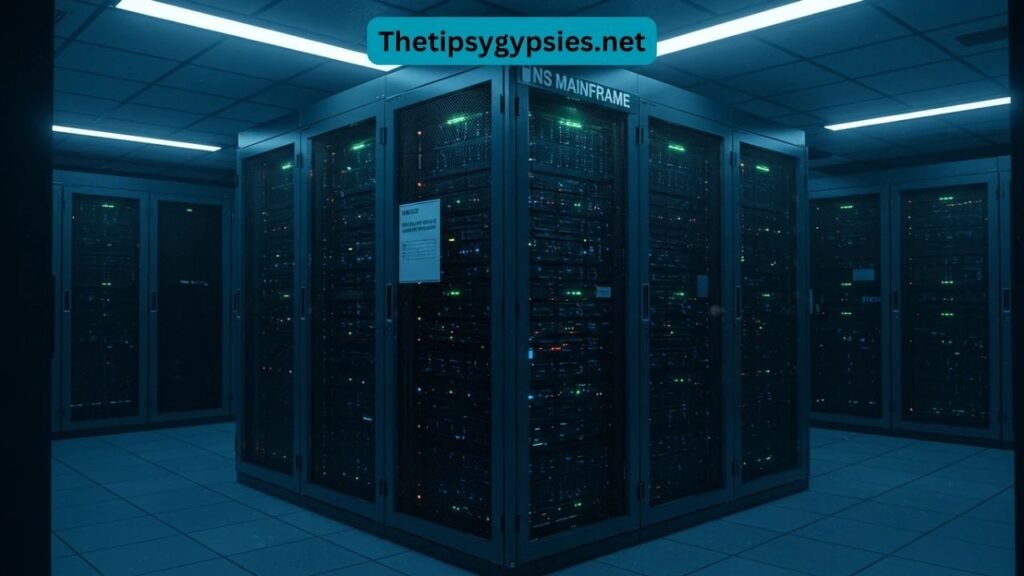Introduction
In the world of large-scale computing, the NS Mainframe has proven itself as one of the most powerful and reliable systems. While many organizations have shifted toward cloud platforms and distributed servers, the NS Mainframe continues to stand strong as the backbone of critical industries such as finance, healthcare, transportation, and government.
Far from being outdated, NS Mainframe systems are evolving with advanced technologies, offering businesses unmatched speed, security, and efficiency. This article takes a closer look at the importance of NS Mainframe, how it is used today, and why it continues to play a crucial role in global operations.
What is NS Mainframe?
The NS Mainframe is a high-performance computing system designed to process enormous volumes of data and manage thousands of simultaneous transactions with incredible speed. Unlike traditional servers, it is built to deliver non-stop availability and handle mission-critical applications where downtime is not an option.
Mainframes are not just about raw computing power—they are about stability, consistency, and the ability to support both legacy and modern applications.
Core Features of NS Mainframe
1. Unmatched Reliability
The NS Mainframe is engineered for continuous operation, often running for years without interruption. Its ability to keep businesses operational around the clock is one of its strongest features.
2. Massive Transaction Handling
Banks and financial institutions rely on mainframes because they can process millions of transactions per second without performance dips.
3. Built-in Security
With cyber threats on the rise, the NS Mainframe stands out for its powerful encryption, identity verification, and secure data storage.
4. Virtualization Power
Mainframes allow multiple operating systems and applications to run simultaneously on a single machine, maximizing efficiency and reducing infrastructure costs.
5. Scalability
From small organizations to global enterprises, NS Mainframe adapts to growing workloads without requiring frequent hardware changes.
Why Businesses Still Depend on NS Mainframe
Despite the rise of cloud services, companies continue to depend on Mainframe for several reasons:
Stability in Operations: Enterprises cannot risk outages in areas like banking or healthcare.
Cost-Effective in the Long Run: Although mainframes are costly initially, they save money by consolidating workloads.
Support for Legacy Systems: Many older applications were built for mainframes and still run efficiently today.
Trusted Technology: Decades of proven performance make Mainframe a trusted solution for critical tasks.
Applications of NS Mainframe in Modern Industries
Banking and Financial Sector
Every second, millions of banking transactions occur globally. The Mainframe ensures that ATM withdrawals, fund transfers, and credit card payments are processed securely and instantly.
Healthcare Industry
Hospitals and insurers use mainframes to manage electronic health records (EHRs), insurance claims, and compliance requirements while ensuring patient privacy.
Government and Public Services
From taxation systems to census data, governments rely on the Mainframe for secure and large-scale data processing.
Transportation and Airlines
Airline reservation systems, ticket bookings, and scheduling all depend on the reliability of NS Mainframe technology.
Advantages of NS Mainframe Over Cloud-Only Systems
Many argue that cloud computing makes mainframes obsolete. However, Mainframe continues to hold unique advantages:
Steady Performance: Unlike cloud servers that may vary in performance, mainframes deliver consistent results.
Minimal Downtime: For industries where downtime equals massive losses, NS Mainframe is irreplaceable.
Superior Security: Advanced encryption ensures data remains safe against breaches.
Centralized Management: Mainframes make it easier to manage and monitor large enterprise operations.
The Future of NS Mainframe
Instead of being replaced, the Mainframe is evolving to work with modern technologies:
Hybrid Cloud Integration: Businesses are combining cloud flexibility with mainframe reliability.
Artificial Intelligence and Analytics: Mainframes are now used for big data analysis and AI-driven insights.
Sustainability: Modern NS Mainframe systems are designed to be energy-efficient, aligning with green IT goals.
This adaptability ensures that NS Mainframe will continue to remain relevant in the coming decades.
Conclusion
The Mainframe is not just a piece of legacy hardware—it is a critical part of the world’s IT infrastructure. From processing billions of financial transactions to supporting public services and healthcare, NS Mainframe proves its value every single day.
As technology evolves, so does the mainframe. With hybrid integration, AI capabilities, and advanced security, the NS Mainframe continues to be the foundation of enterprise computing. For organizations that prioritize stability, performance, and long-term reliability, the Mainframe remains an irreplaceable solution.






